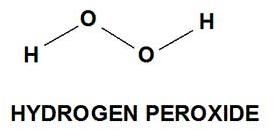
You almost want to ‘flush’ the roots of the fungus. Heavily water the plant with the mixture, making sure to get all sides of the roots.

Mix ¼ cup hydrogen peroxide with one quart of water. Have you noticed signs of fungal infections on your plants? A few signs include ‘rust’ on the leaves or stem, white mold, or brown spots on the leaves. Mix two teaspoons of hydrogen peroxide with one gallon of water and spray it on your garden a couple of times a week. When roots have oxygen, they have more room to breathe and are better able to absorb water, both of which they need to grow. Once you plant your seeds or plants, you can spray hydrogen peroxide directly into the soil at the roots, this helps bring your plant more oxygen. Hydrogen peroxide can provide that boost while also enhancing growth. The seeds will be healthy and ready for you to plant in pots or your garden. Let them sit for four hours and then rinse them off. Pour enough into a bottle to cover the seeds. This helps your seeds grow faster and healthier.Īll you need is your hydrogen peroxide and a watertight container. That’s because hydrogen peroxide naturally kills off any germs, including bacteria that reside on the seeds. Sanitise your Seedsĭo you plant a seed garden first? You likely soak them in water before planting them to enhance germination right? If you soaked them in hydrogen peroxide, they may grow even faster. Mix equal parts hydrogen peroxide and water in a spray bottle and lightly spray the leaves to chase away unwanted pests. While soaking the roots helps protect the heart of your plant, sometimes insects feast on the leaves. Pest and Insect RepellantĪre you tired of pesky insects and pests taking over your plants? Hydrogen Peroxide helps chase them away. You should have healthy roots with plenty of room and no tangles. This should help the soil aerate, giving the roots more room to breathe. Pour the mixture around the roots of the plants, making sure it doesn’t touch the leaves.Mix one part hydrogen peroxide with two parts water.Hydrogen Peroxide can help this with these simple steps: If you’re easily able to pull up roots, they aren’t firmly planted in the ground, likely due to root rot. As it progresses, it causes decay on the roots and eventually works its way up to the leaves. This happens when your soil doesn’t leave enough room for oxygenation. Cure Root Rotĭo you have plants with yellow leaves? They may have root rot. How can you use hydrogen peroxide on your plants? Here’s a list of our favourite ways. H2O2 is actually in rain, so using it as a part of your gardening process mimics what Mother Nature does for it too. If you’ve ever noticed how much more rainwater helps your plants than regular tap water, you’ve seen the benefits of hydrogen peroxide.

Hydrogen Peroxide 3% works well as a seed sanitiser, root enhancer, and it helps fight plant diseases. Whether your plants suffer from root rod, fungal infections, or you need a good disinfectant, hydrogen peroxide may do the trick. Harmful chemicals aren’t necessary to grow healthy plants.

The Non-Toxic Miracle Solution of Hydrogen Peroxide for Plants


 0 kommentar(er)
0 kommentar(er)
